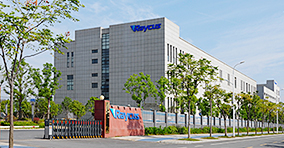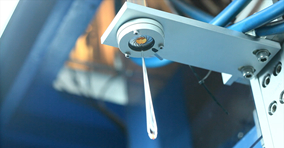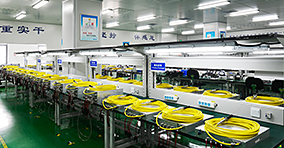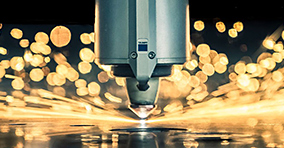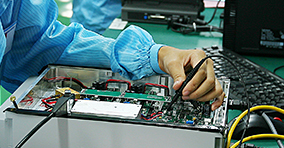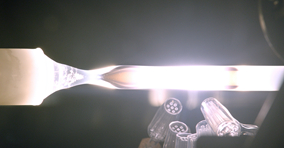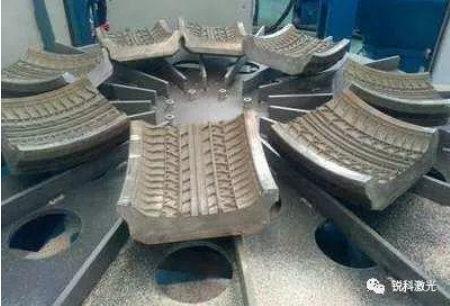In the manufacturing process of automobile tires, molds are very important mechanical equipment. The quality of the mold directly affects the quality of the tire. There will be carved patterns or other patterns on the surface of tire molds, and the molds are often used in high temperature and high humidity environments. Therefore, there will be a lot of rubber or other residues left in the grooves of the internal carvings. After a certain degree, it will affect the shape and structure of the mold and eventually cause the produced product to be defective. Therefore, it is particularly important to keep the tire mold clean.
With the continuous development of science and technology, tire mold cleaning technology is constantly updated. The earliest method was to soak tire molds with high-temperature alkaline water. This is very useful for small molds, but not for large molds.
Later, people invented the sand blasting method. The raw materials used for the sand blasting method generally include sand and glass beads. However, all sand blasting cleaning mold technologies have problems of damaging the surface of the mold and reducing the service life of the mold. In recent years, technologies such as chemical cleaner cleaning and dry ice cleaning have emerged in the industry, but these methods cannot fundamentally solve the problem of cleaning tire molds. From the perspective of industry development, it is necessary to develop more environmentally friendly, effective and Cost-effective cleaning technology.
Tire mould
Pictures from the Internet
Laser cleaning tire mold principle and advantages
Laser tire cleaning technology is a process that uses the laser’s high energy, high brightness, and good directivity to destroy the force between the pollutant and the surface of the object, thereby removing the pollutant without damaging the substrate.
Laser cleaning of tire molds is a process of selective evaporation of dirt on the surface of laser cleaning materials. Different materials have different laser energy absorption rates for specific wavelengths. When the absorption rate of the attachment on the surface of the material is greater than the absorption rate of the substrate, the temperature of the attachment can instantly rise above the melting point and vaporize by laser irradiation. Since the surface layer interface gasification phenomenon does not reach the melting point of the substrate, the substrate is not damaged.
Laser cleaning tire mold schematic
What are the advantages of laser cleaning tire molds over traditional cleaning methods? A comparison table to show you more.
Practical application cases
In the application of tire cleaning for a tire mold manufacturing factory, we use Ruike RFL-P500 pulsed fiber laser with average power of 500W, laser center wavelength of 1064nm, output fiber length of 10m, and laser scanning width of 10-80mm adjustable The focusing lens is adjustable from 100-280mm, the tire mold size is MIN42, and the mold type is two half molds and flexible molds. The 500W laser cleaning handheld device is directly irradiated on the tire mold surface, the laser scanning speed is set to 6000mm / s, and the cleaning is performed one by one under the same laser energy condition.
The final cleaning effect and efficiency are as follows:
Offline 1: Time to clean a pair of 51-inch spring air sleeve molds (semi-steel tires) in 28 minutes;
Line 2: 80 minutes for cleaning two molds (semi-steel tires) from the normal 51-inch spring air sleeve to the cleaning cycle;
3 Cleaning effect: gelatin, rust, and pads can be completely cleaned without dead corners, the outer surface of the mold is bright, and there is no damage such as drawing, burning spots and color difference.
When the laser irradiates the tire mold surface, most of the laser energy is absorbed by the pollutants on the surface, and the surface temperature of the object rises rapidly. Therefore, the pollutants covering the surface of the tire mold are instantly heated and vaporized, and finally the dirt is removed. When the laser pulse width is in the nanosecond range, the surface temperature rises to
In the formula, F is the laser energy density, R is the surface reflectance, K is the thermal conductivity, a is the thermal diffusivity, and t is the laser pulse width. For general dirt, the parameters R, a, and K are fixed. Since the pulse width of the laser used does not change, the surface temperature rise is only related to the laser energy density. We have listed the corresponding laser energy density values under the relevant parameters:
This table can be a good guide for us to choose the appropriate laser for cleaning experiments. When the laser energy density value is appropriate, the pollutants can be completely removed without damaging the surface of the substrate.
[Rayclass | Rui Class] TIPS
The laser energy density value can affect the temperature value generated when the laser irradiates the surface of the object, and then affect the laser cleaning effect and efficiency. Therefore, before selecting a laser suitable for cleaning a tire mold, it is necessary to consider the technical parameters of the required laser and the optical parameters of the optical path system of the cleaning equipment. The 500W high-power pulsed fiber laser launched by Ruike Laser has high average power, high single-pulse energy, uniform spot energy distribution, universal control interface, strong compatibility, adjustable operating frequency, high beam uniformity, and can fully meet the requirements of tires. Mold cleaning requirements.


